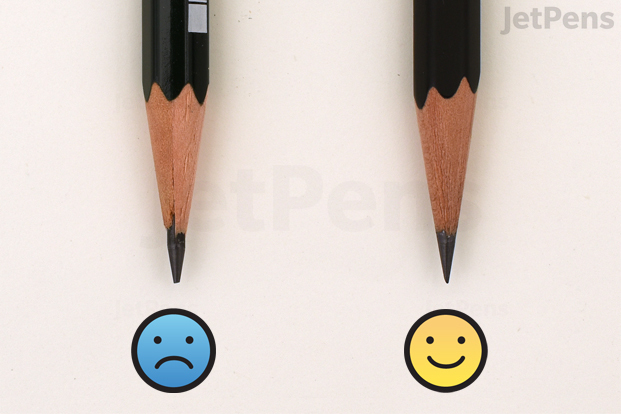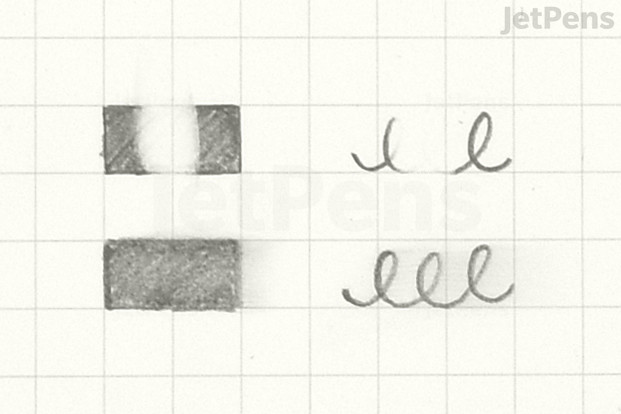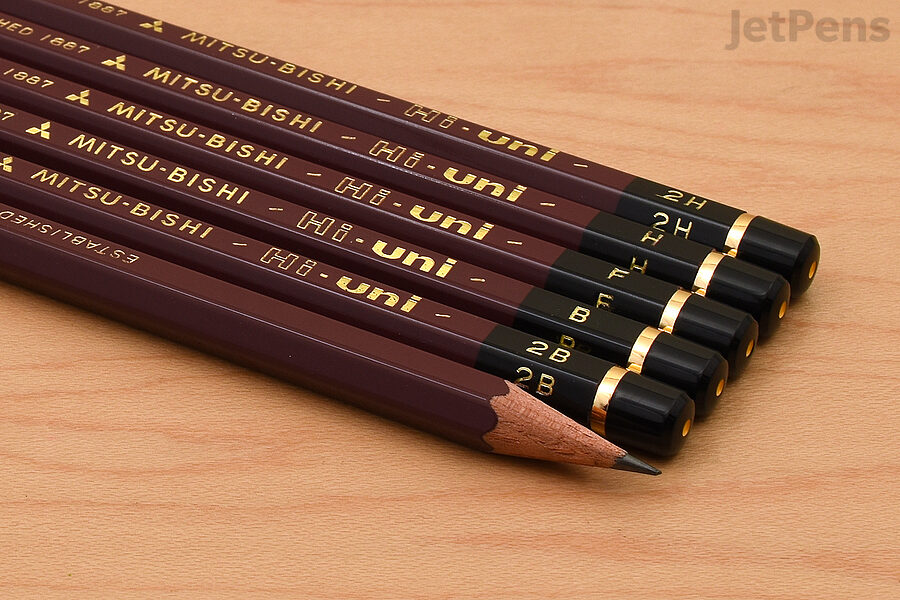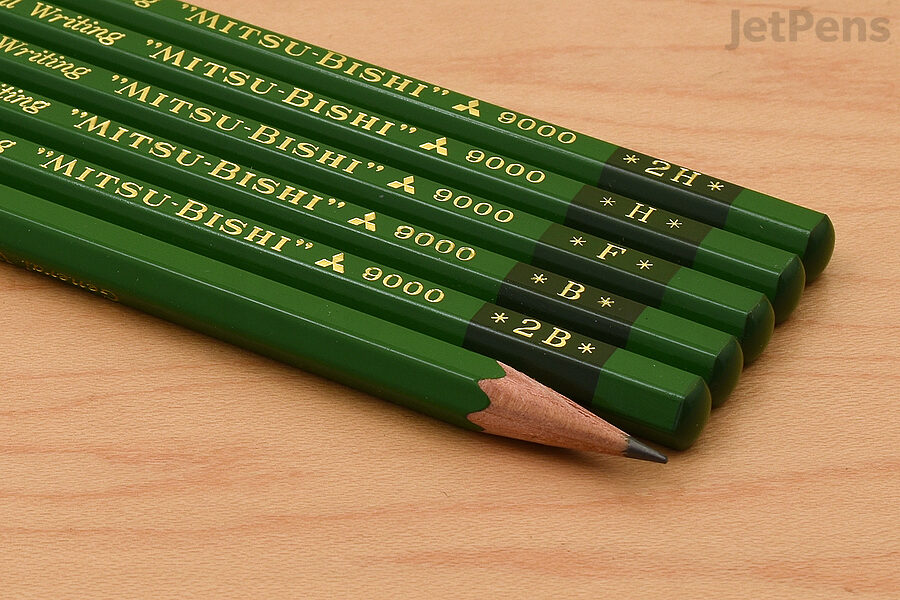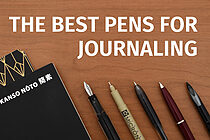Although the core of the pencil is known as "lead," it’s actually made of a mixture of graphite and clay. There are different grades of lead depending on the ratio between graphite and clay. The more graphite a lead has, the softer and darker it will be, while more clay means harder and lighter lead.
Different regions use different lead grading systems. For this article, we'll be following the European system, which uses "H" for hardness and "B" for blackness. Our chart below shows the range of lead grades from 10B to 10H. HB and F are in the middle of the spectrum, with F being slightly lighter. HB usually lines up with American #2. For more detailed information on lead grades, please see our article here.











